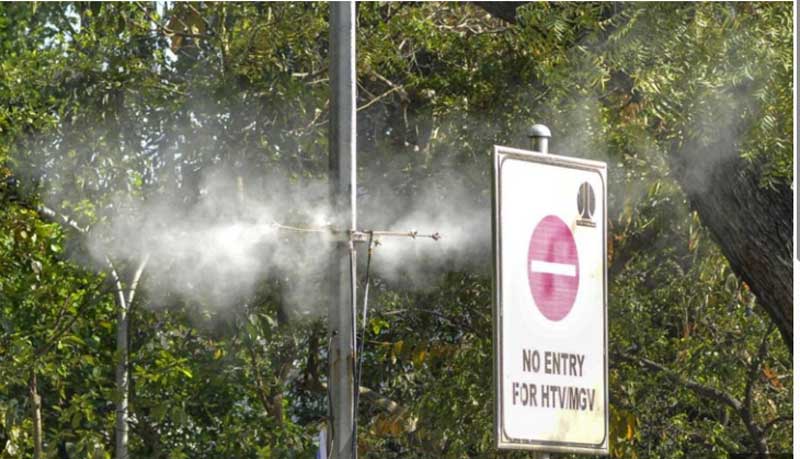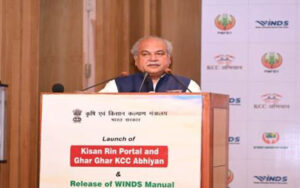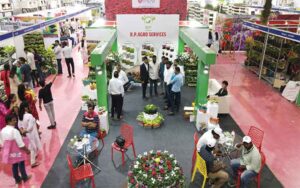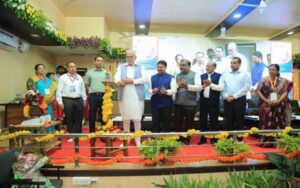Budget 2025-26 focuses on horticulture growth
By YP Singh
The Union Budget 2025-26,presented by Finance Minister Nirmala Sitharaman on February 1, 2025, has put agriculture in the spotlight once again. Recognizing the crucial role of farmers in making India the “food basket of the world,” the government has announced several new initiatives for the sector. These include a strong push for horticulture, improvements in crop insurance, and support for better infrastructure and mechanization. However, the overall budget allocation for the Ministry of Agriculture and Farmers’ Welfare has been reduced by 2.5%, raising concerns about farmer welfare and income growth.
Focus on Crop InsuranceThe Pradhan Mantri Fasal Bima Yojana (PMFBY) and the Restructured Weather Based Crop Insurance Scheme (RWBCIS) remain key government initiatives, providing financial protection to farmers against crop losses caused by natural disasters and extreme weather events. Since its launch in 2016, PMFBY has helped millions of farmers by covering risks from the pre-sowing to post-harvest stages.Under PMFBY, farmers pay a low insurance premium: 2% of the sum insured for Kharif crops, 1.5% for Rabi crops, and 5% for horticulture produce. The remaining premium cost is shared equally by the central and state governments.
As of January 2025, 4,803 lakh hectares of farmland have been insured under PMFBY, with a total sum insured of Rs 19.5 lakh crore. So far, 68 crore farmer applications have been insured.Despite its importance, the budget allocation for PMFBY has been reduced by 23% to Rs 12,242 crore for 2025-26, the lowest since 2018-19. Additionally, insurance claims paid to farmers have been decreasing, raising concerns about whether farmers will continue to benefit from this scheme.Horticulture: A New Growth AreaThe government has launched a comprehensive programme for boosting the production, supply, processing, and pricing of fruits and vegetables, with a Rs 500 crore allocation in 2025-26. This programme will involve Farmer Producer Organisations (FPOs) and cooperatives to strengthen the horticulture sector across different states.Over the past few years, per capita income has been rising, leading to an increased demand for high-nutrition food products such as fruits, vegetables, dairy, poultry, and fisheries. In response, the government is promoting crop diversification and developing value-added infrastructure to support this shift.
The Economic Survey 2024-25 has identified the horticulture sector as a fast-growing industry with great potential for profits compared to traditional crops. To support this, the government has proposed upgrading warehousing and air cargo infrastructure to ensure quick transportation of perishable horticulture produce.During her speech, Sitharaman referred to agriculture as the “first engine” of India’s development. Despite economic challenges, agriculture remains one of the few sectors that has shown consistent growth. However, issues related to farmer income, irrigation, and post-harvest infrastructure still need to be addressed.To support farmers, the government continues to implement schemes such as: Rashtriya Krishi Vikas Yojana (RKVY): Strengthening the entire agricultural value chain. Mission for Integrated Development of Horticulture (MIDH): Encouraging horticulture production and processing.Per Drop More Crop: Promoting efficient water usage in farming.
Sub-Mission on Agriculture Mechanization: Supporting farmers with modern machinery. Agriculture Infrastructure Fund (AIF): Developing better post-harvest storage and processing facilities. Need for Better Infrastructure and Storage FacilitiesA major challenge in Indian agriculture is post-harvest losses due to inadequate storage, grading, and cooling facilities. To address this, the government has proposed linking storage and cooling units to key demand areas, such as: Markets (mandis), Ports, AirportsAdditionally, micro-cold storages at the farmgate and village level will be promoted. Existing schemes like AIF will be utilized to develop these facilities. However, the limited success of AIF so far suggests that the scheme’s provisions need to be reviewed to attract greater private sector participation.The government has also launched new initiatives to improve agricultural productivity and increase farmer earnings. These include: National Mission on High-Yielding Seeds – Aimed at improving seed quality for better crop output.The Union Budget 2025-26 has reaffirmed the government’s commitment to agriculture, with a strong focus on horticulture, crop insurance, infrastructure development, and modern technology.
However, the overall budget cut for the agriculture ministry raises concerns about whether these initiatives will receive sufficient funding for successful implementation.To ensure sustainable growth in agriculture, the government must: Ensure timely release of insurance claims to support farmers in times of crisis. Increase investment in rural storage and transport infrastructure to reduce post-harvest losses. Encourage private sector participation in agricultural schemes for better financial sustainability. Promote farmer awareness about modern technologies and digital tools.With rising demand for nutrition-rich food products and the government’s focus on horticulture and crop diversification, Indian agriculture is poised for transformation. However, sustained efforts and proper execution of policies will be crucial to ensuring that farmers truly benefit from these initiatives and that agriculture remains a key driver of India’s economic growth.

















